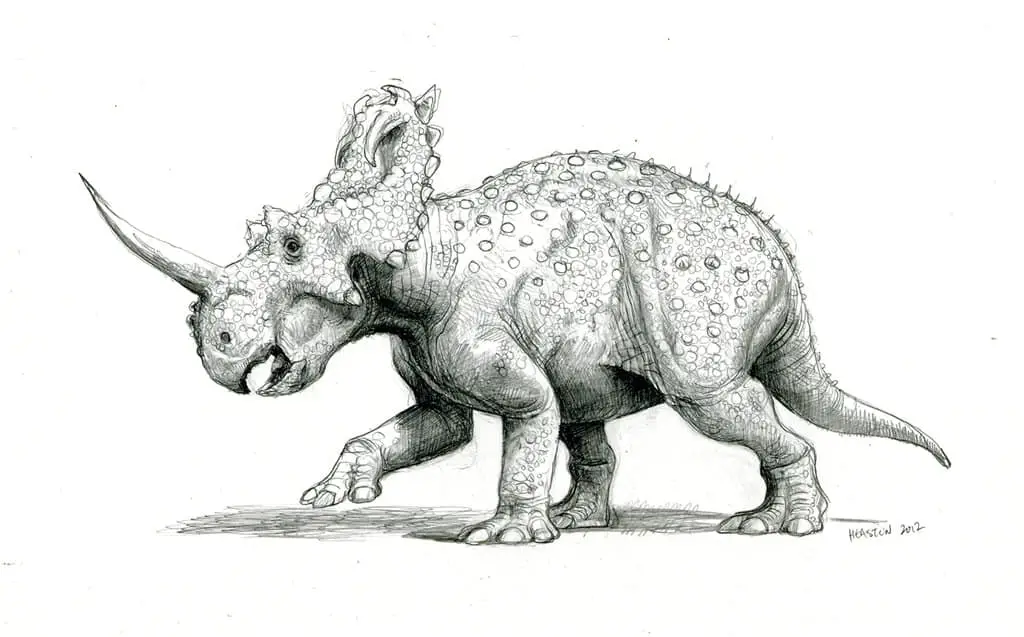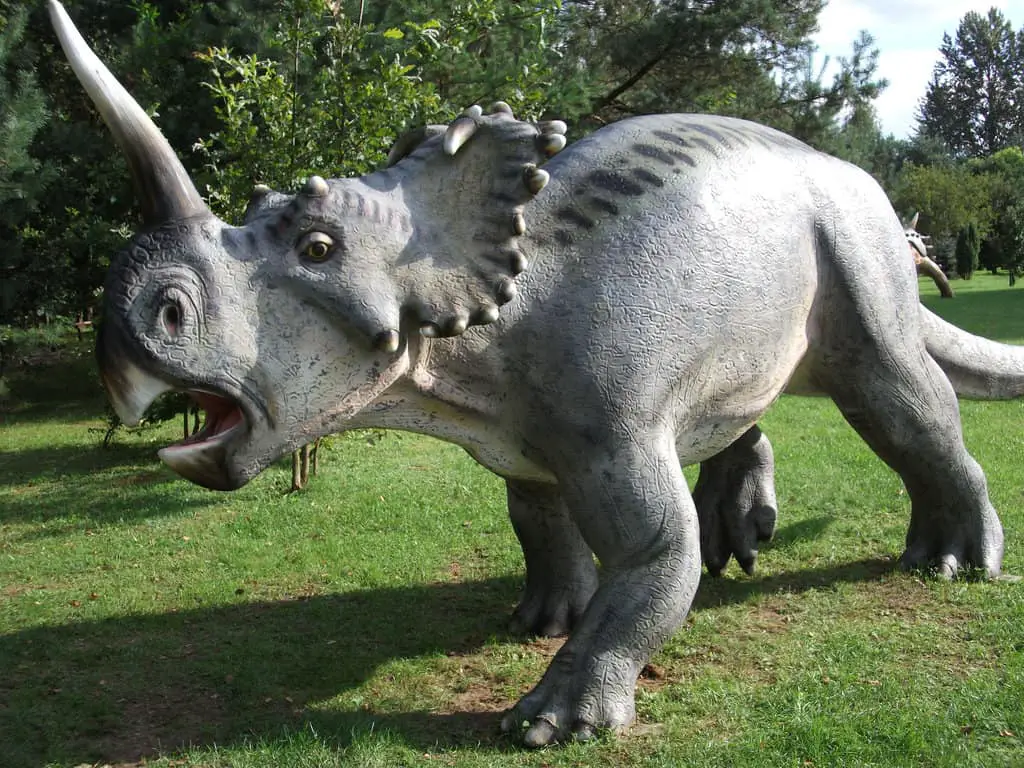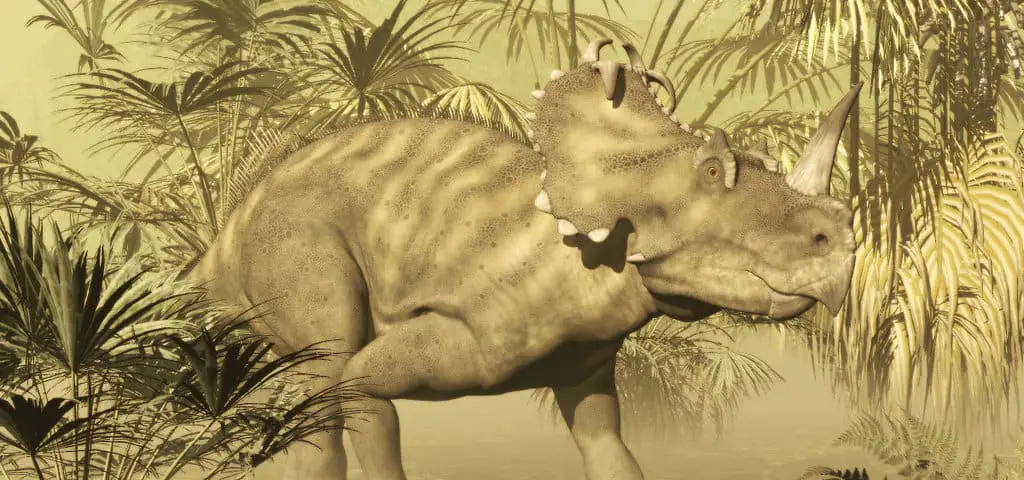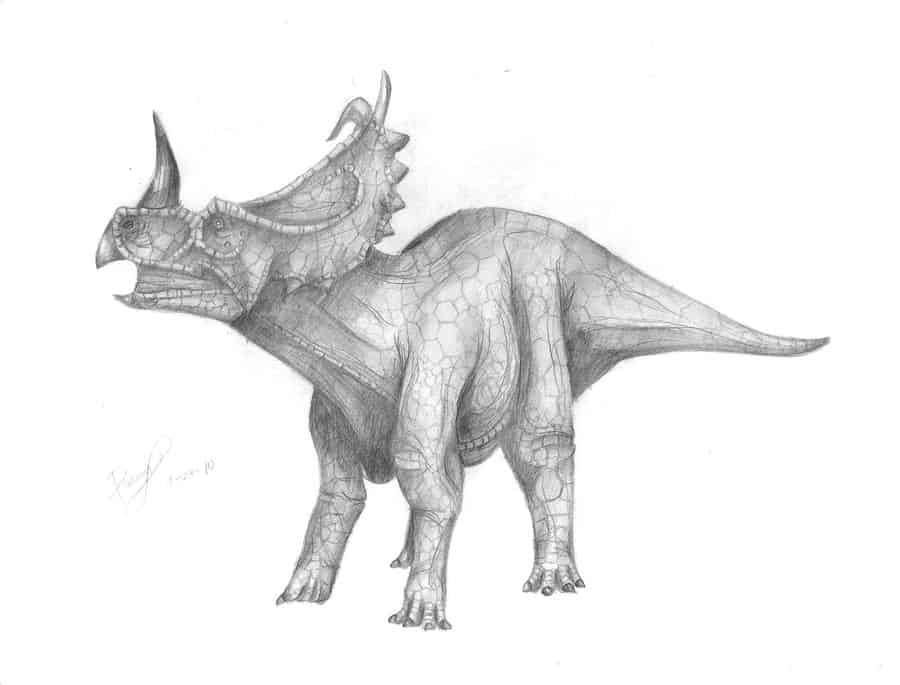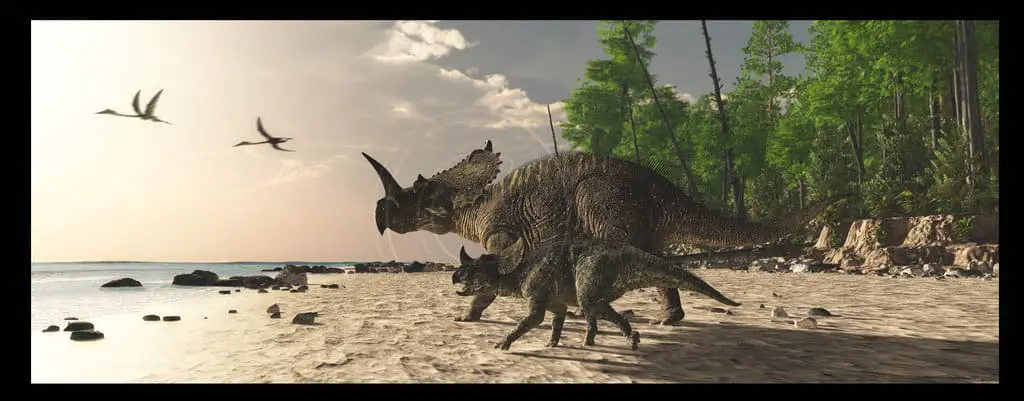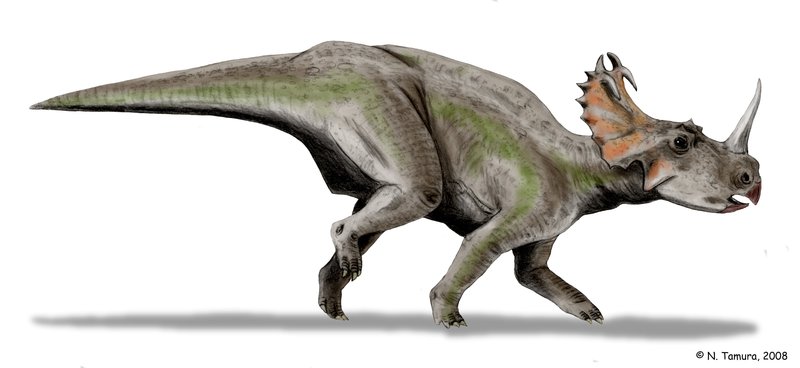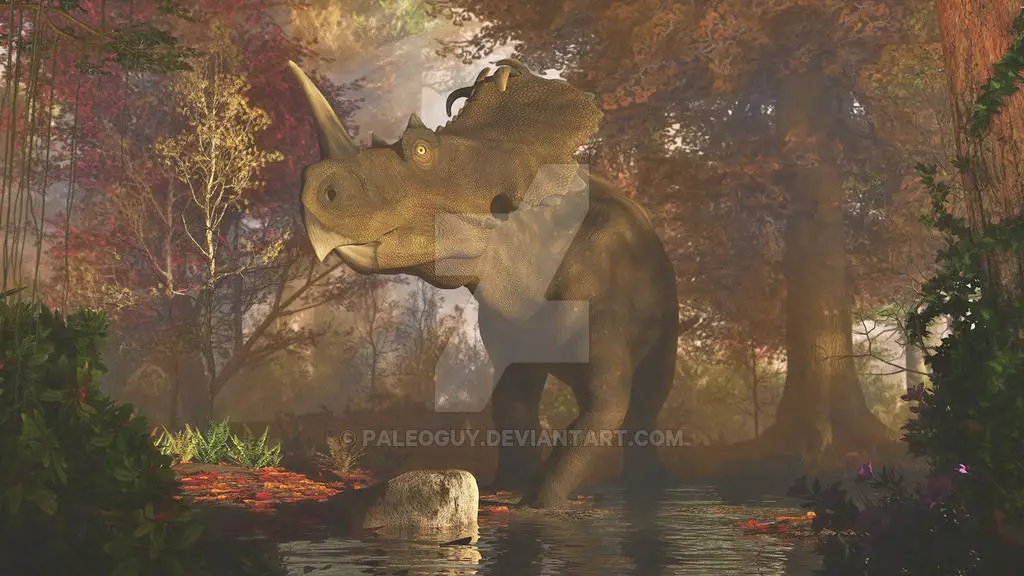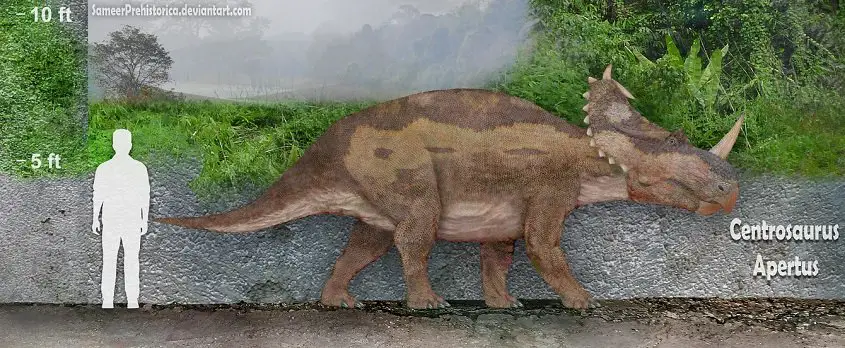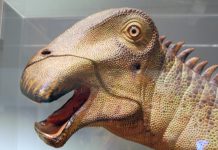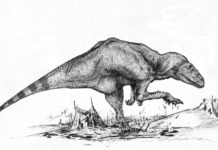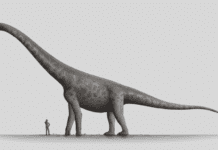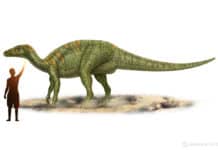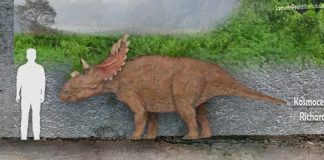Quick Centrosaurus Facts
- Lived in what is now known as Canada
- Weighed as much as an Asian elephant
- Had a nasal horn like a rhinoceros
- Was about 2 car lengths long
- May have traveled in large packs like buffalo do
– Shop Centrosaurus Merchandise –
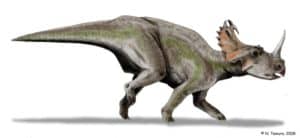
About Centrosaurus
Centrosaurus is a species of dinosaur which lived approximately 76.5 to 75.5 million years ago, during the Late Cretaceous Period. It was first discovered in 1904 by Lawrence Lambe in 1903 and later classified by him in 1904. This dinosaur was first discovered near Red Deer River in Alberta, Canada, but it has also been discovered in Dinosaur Provincial Park in Alberta as well. The name of this dinosaur means “pointed lizard.”
If you look carefully at Centrosaurus pictures, then you’ll notice that it bears a resemblance to a muscular rhinoceros, or perhaps a cross between a rhino and a triceratops. That’s because it of its squat body with low hanging head that has a very prominent nasal horn attached to it. This animal also had a huge bony plate that made up its neck frill – very much like a triceratops. Neck frills with protruding horns that most likely prevented its neck from being attacked.
Interesting Facts
Some interesting facts about Centrosaurus are that this dinosaur was approximately 20 feet long and weighed approximately 6,000 pounds or 3 metric tons. That means that it weighed as much as an Asian elephant. It is also believed that these animals traveled in large herds. This was probably to help protect them from being attacked by carnivores such as Albertosaurus. This theory is reinforced by the fact that hundreds of Centrosaurus – many of them younger dinosaurs – were found in Dinosaur Provincial Park. This would suggest predator attacks on a large scale. Most likely predators that followed the herds and picked off the young and/or the weak.
It is believed that these dinosaurs were herbivores, despite their fierce looks. That’s because they didn’t have teeth like most carnivores, but instead had sharp pincers that were perfect for tearing through tough plant material. Some of the Cretaceous plants which would’ve probably been in its diet included: horsetails, ginkgo, Cycad, horsetails, magnolia and club ferns. It probably consumed hundreds of pounds of these plants on a daily basis.
At the moment, the purpose of their large nasal horn is still unknown. In fact, it has been the subject of debate for over a hundred years now. Some scientists believe it was used primarily for self-protection from predators. Others believe that it was used as a visual display for mating practices. As with the horn, the purpose of the frill is unknown to scientists. Since it is too thin to offer any real protection from predators, it has been theorized that it was either used as a way for Centrosaurus to recognize each other or for mating purposes.
